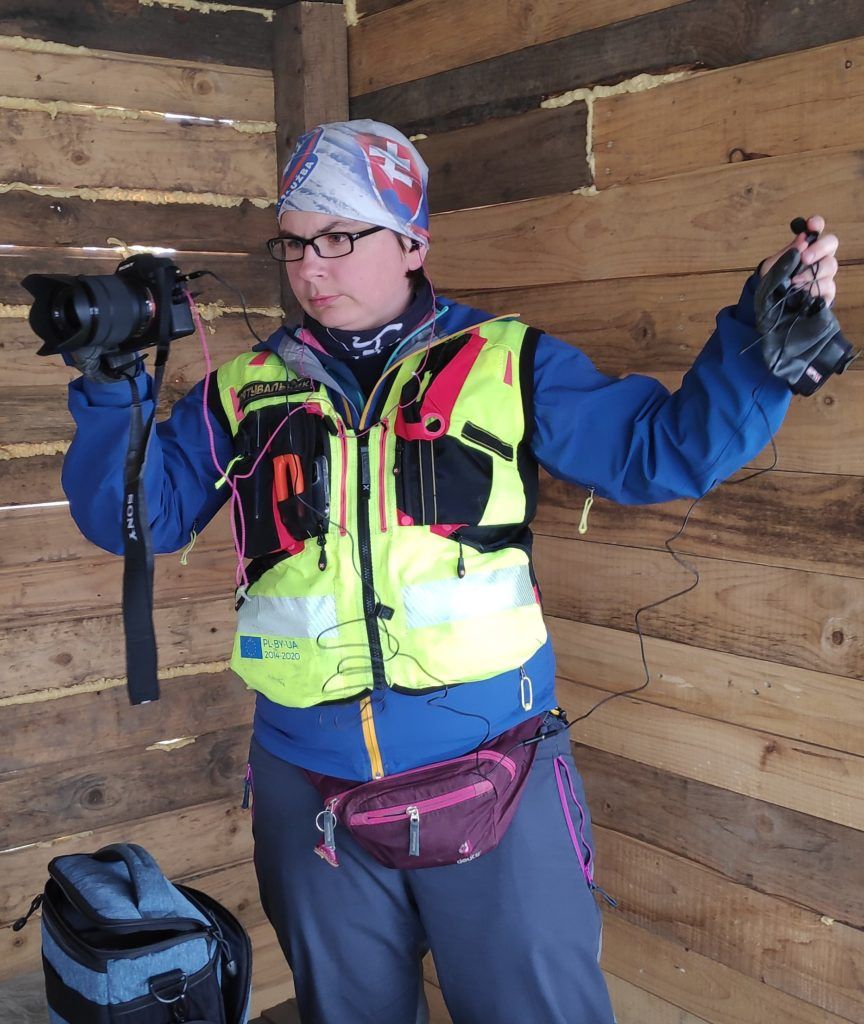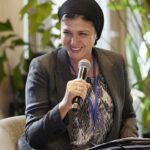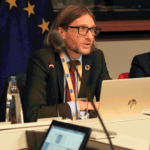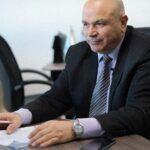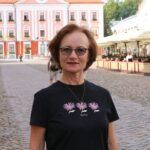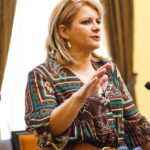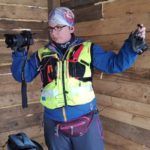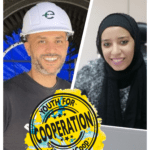Voices from the field
Karolina Kiwior
"I don’t tell my family I'm driving aid to Ukraine"
When war sirens start screeching through the skies of Lviv, she speeds up the van she’s driving and crosses back to Poland, through the Krościenko border. Karolina Kiwior, 32, cartograph in daily life, Polish coordinator of the SOSRescue project, has been a mountain rescuer all her life. It was kind of natural for her to engage in a rescue operation for the victims of the Russian aggression, whose end is not in sight. An event which has overturned the course of the project she was implementing, in the framework of the ENI CBC Poland-Belarus-Ukraine programme. At the beginning of April, we visited her, to see first-hand how the war is changing from within the activities of cross-border cooperation. How projects born to sustain long-term development, are suddenly dealing with humanitarian operations.
Karolina, we are in Ròwnia, south of Poland, in a structure where aid is collected and then uploaded on vans to be taken to Ukraine. What was the purpose of this building before the war?
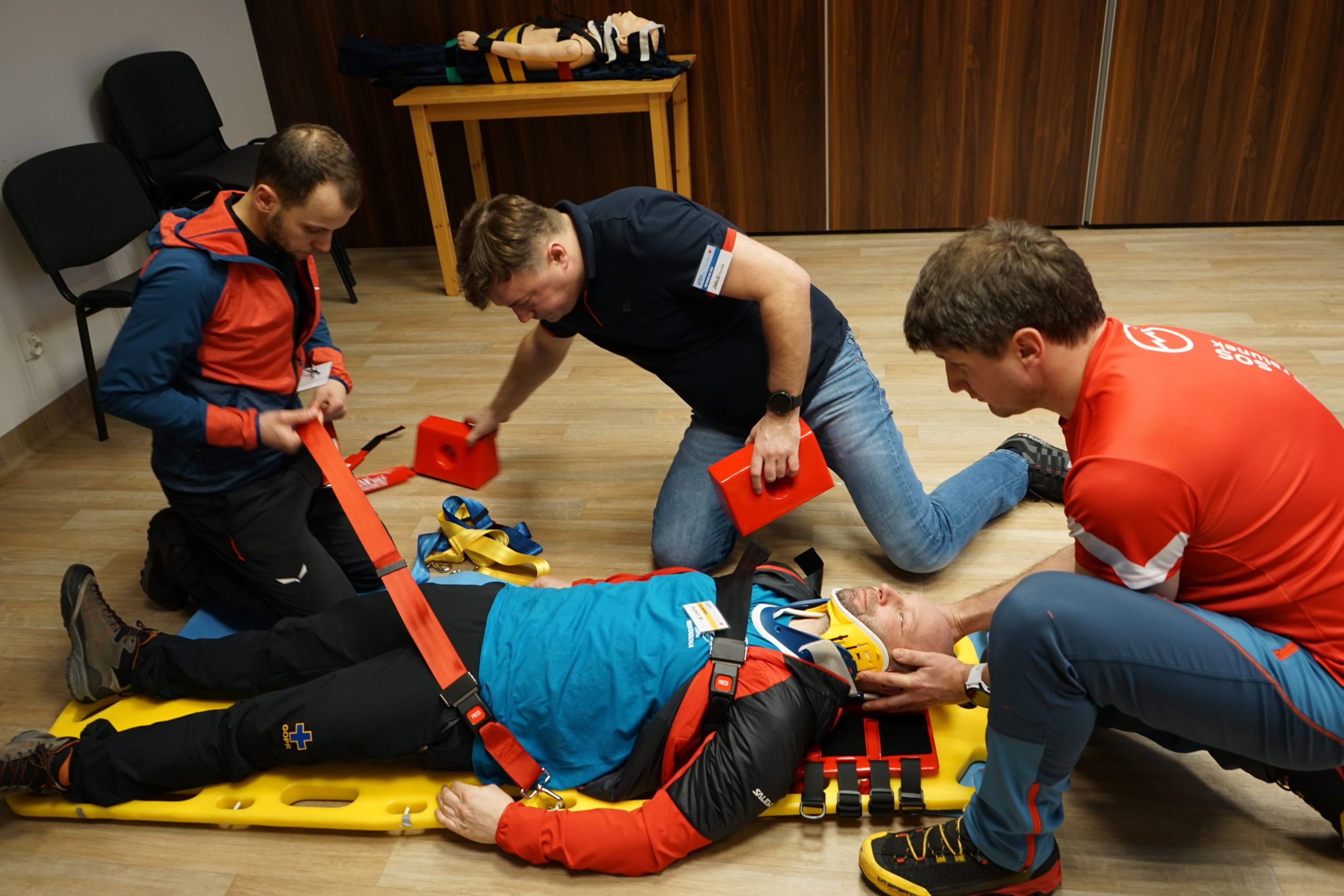
It was restructured to be a training centre for mountain rescuers from Poland and Ukraine. The idea was to improve the skills of rescuers, border guards, fire fighters, or policemen, by training together to assist people in trouble or lost on the mountains, across the two border regions. We had done a training just few weeks before the war started.
But February 24th changed everything…
When I heard about the Russian attack, it was mind-blowing for me: Ukraine is very close to my heart, my grandfather was born there, in Borislav. I instantly thought we had to do something. I left home and got together with other volunteers, and more people of the Mountain Volunteer Search and Rescue group (GOPR), the decision was unanimous: this big building – under renovation thanks to the EU funded project SOSRescue – was the ideal place to help Ukraine.
Why?
We are only 12 kilometres from the border, and immediately people started to pour in escaping the attack. Now things have calmed down, but then hundreds, even thousands of refugees were crossing on foot, every day. So, we wrote to the Joint Technical Secretariat, asking if it was possible to use the building to host the refugees. We quickly got the green light, so there was no more reason to hesitate. ‘Let’s do it’. We used the weekend to turn the centre upside down, and in three days we were operational.
What did you do practically?
Everything! This was only a training centre, with some mannequins for first aid courses, projectors to play videos, many chairs, few desks. There were no beds, not even a washing machine: we were not equipped to host people. But we quickly mobilised our network, mostly in Poland, and a solidarity chain was activated. The Foundation started fundraising on the Internet, many people from the whole country joined in, so we could rapidly provide the needed beds, and blankets and sleeping bags, and everything else you need to set up a proper shelter. Even for rescuers.
How many people can you accommodate now?
We created 35 places for refugees on the first floor, and on the second 25 places for rescuers, paramedics, doctors, and scouts who are active in the relief operations, who work at the borders or help in transferring aid items to Ukraine. We have kept the ground floor for the staff organisation.
And you also got in touch with your Ukrainian partners…
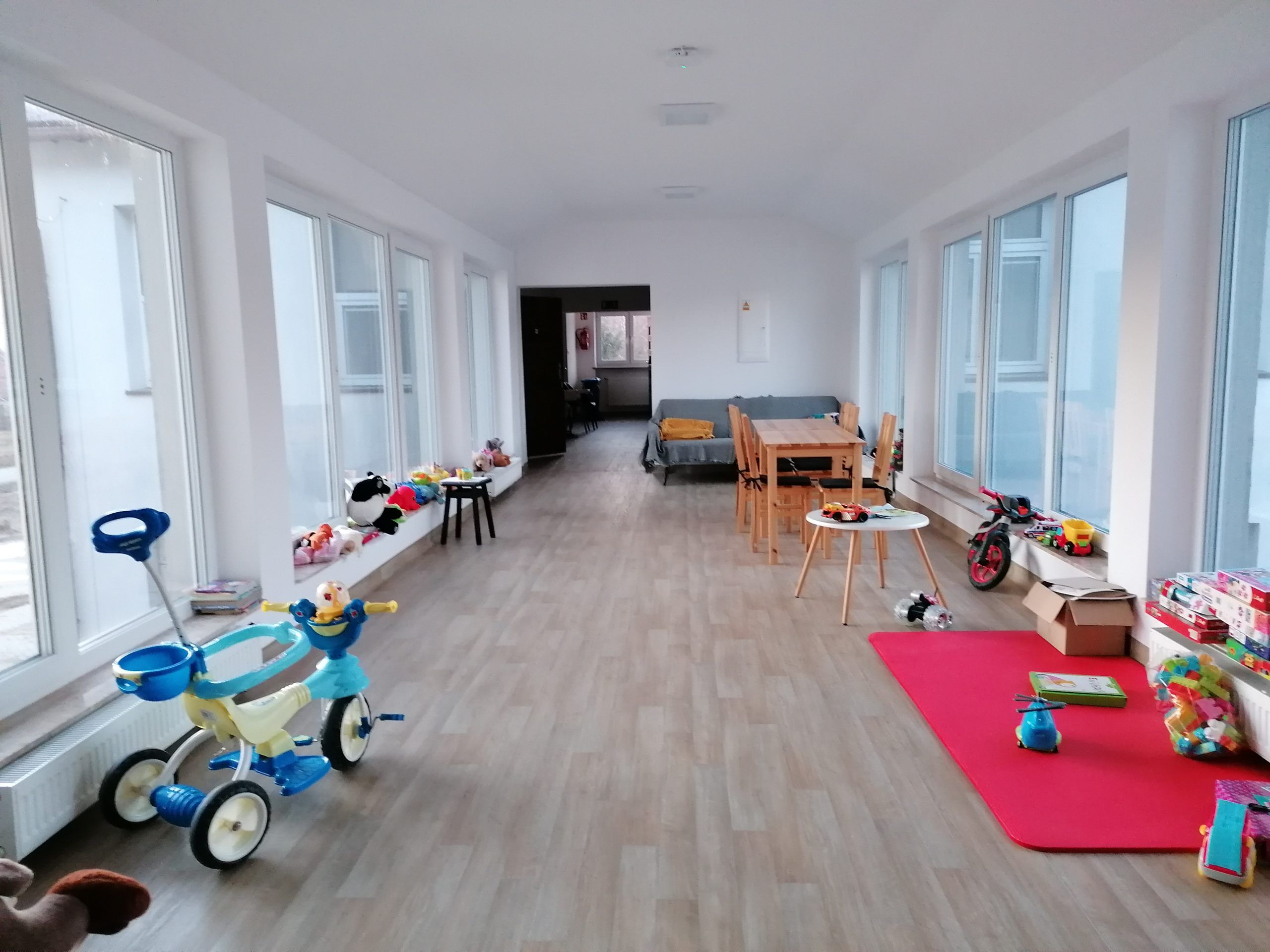 We immediately called our colleagues, offering support for transferring their families to safety if they wanted. And not only. History is like this, many Polish people also have a family in Ukraine, so we identified the names we had to look for at the border, we collected and transported them here, where they could rest and recover, while we were exploring new solutions to accommodate them in the long term.
We immediately called our colleagues, offering support for transferring their families to safety if they wanted. And not only. History is like this, many Polish people also have a family in Ukraine, so we identified the names we had to look for at the border, we collected and transported them here, where they could rest and recover, while we were exploring new solutions to accommodate them in the long term.
So, this is only a transit point
Yes, it’s a place to calm down, and to figure out what to do next. These people lost everything overnight, they packed their life in a suitcase and run away. We heard many stories, but they all had in common a starting point, a normal life and job, a house, kids going to school. All was lost in a few hours. Coming here, many showed signs of distress, couldn’t sleep at night. In general, they were able to calm down in a couple of days; when they started asking what they could do to help us, we knew they were doing better.
You are also transferring humanitarian aid to Ukraine: where does the aid come from?
From the beginning of the war, we have collected aid items like food, medicines, clothes from Poland or other European countries, and we are moving it by vans. In one month, we have transported more than 80 tons of stuff thanks to our micro vans, because big trucks cannot cross at the Krościenko border crossing.
Talking about border crossing… You have been driving vans yourself, back and forth, across a country under attack, for dozens of times. Are you not afraid?
I got used to it. But my family doesn’t know that I’m doing it, they would be too scared. So, I don’t tell them (and Karoline smiles, shrinking her shoulders).
Whom do you distribute the aid to?
We are in touch with our rescue partners in Ukraine, we give it to them, and they do the reallocation, as they know better the needs on the ground. Sometimes they tell us where to deliver directly, and we go there and download our vans.
How important is it to know people on the other side of the border?
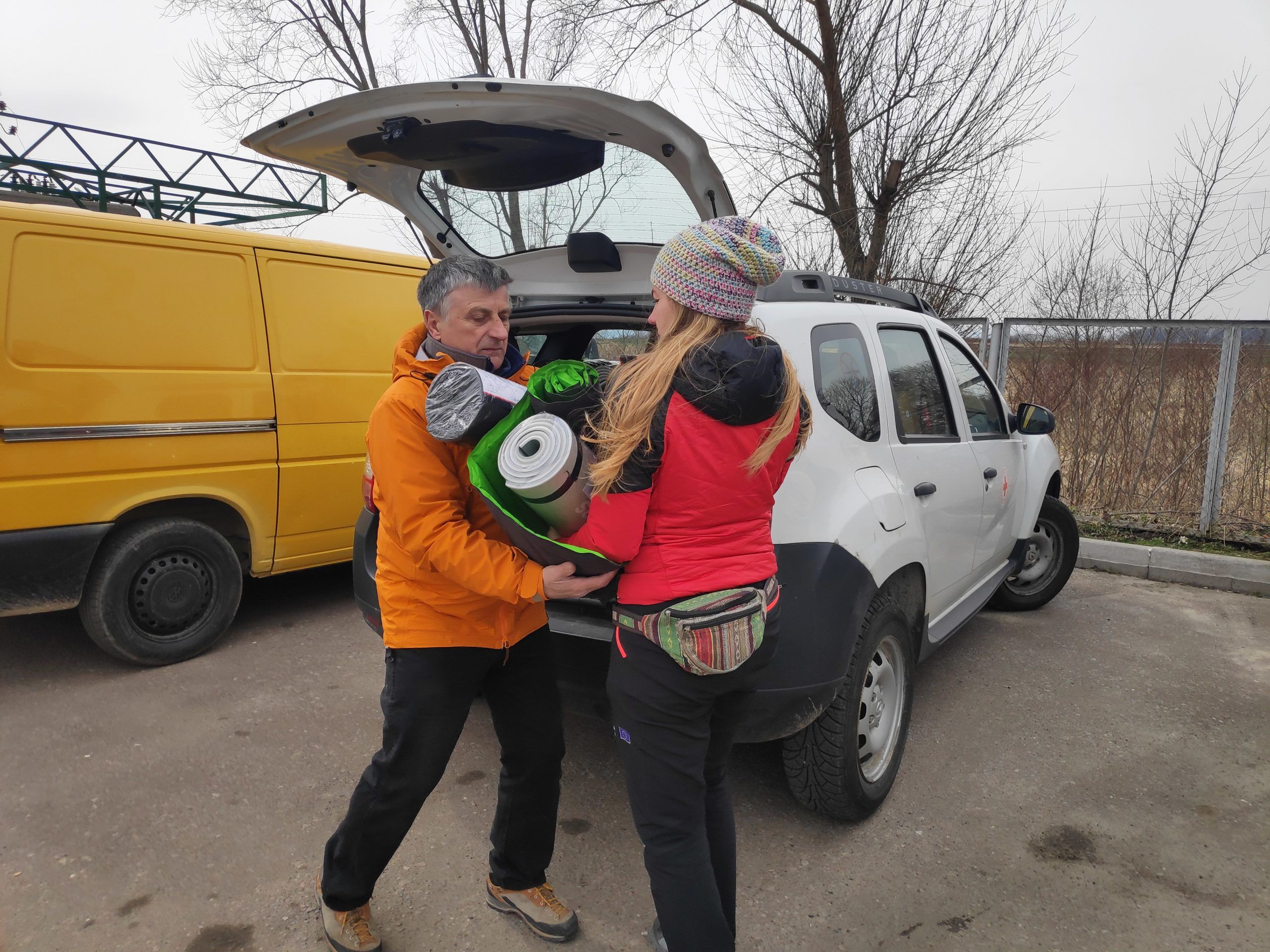
It is essential. From the very beginning we could ask our Ukrainian partners about their real needs, and we were able to deliver what they wanted into their own hands, so that they could do the redistribution according to their assessment. As the situation was quite chaotic, there were many cases of goods lost, or stolen, or mismanaged. But we knew it would not be the case for us, the aid was in good hands. The links and personal relations, the trust created by the ENI CBC project have made all the difference.
Poland is making a tremendous effort to help Ukraine. Do you think this dreadful situation in the end will push these two people, these two countries, to be closer to each other?
For me, it was amazing to see how Poland reacted. Nobody just watched TV from the sofa, the Polish people all rushed out to help, many even drove their cars to the border offering free transport anywhere to fleeing families, or opening their homes to them, for as long as it is needed. So much aid was collected, and still is… This response was outstanding. I am sure it has helped even to heal ancient historic wounds between these two nations.
You are a volunteer here, like all your colleagues. You took time off work to do this, you have been here for all this time without any financial compensation. How long can you keep going?
I have been a mountain rescuer for around 12 years, I always wanted to help people. As a volunteer, when they need me, I go, this is the idea behind being a rescuer. So, when this emergency broke out, it was very natural for me to get up and go. But I don’t ask myself for how long I can keep doing it…. I just do it.
What do you see in the future of the SOSRescue project?
I don’t know how the situation will evolve, and for how long support for the fleeing population will be needed, or in which forms. I know that now we have a big, fully equipped building very close to the border: a shelter which could be used for different purposes related to the refugees. But overall, I think one day we will go back to being a simple training centre for mountain rescuers, and hopefully the Ukrainians will be able to come here to see this building for the first time, since the pandemic and then the war have prevented them from travelling. When this all ends, we will celebrate and have a great party. Together.
